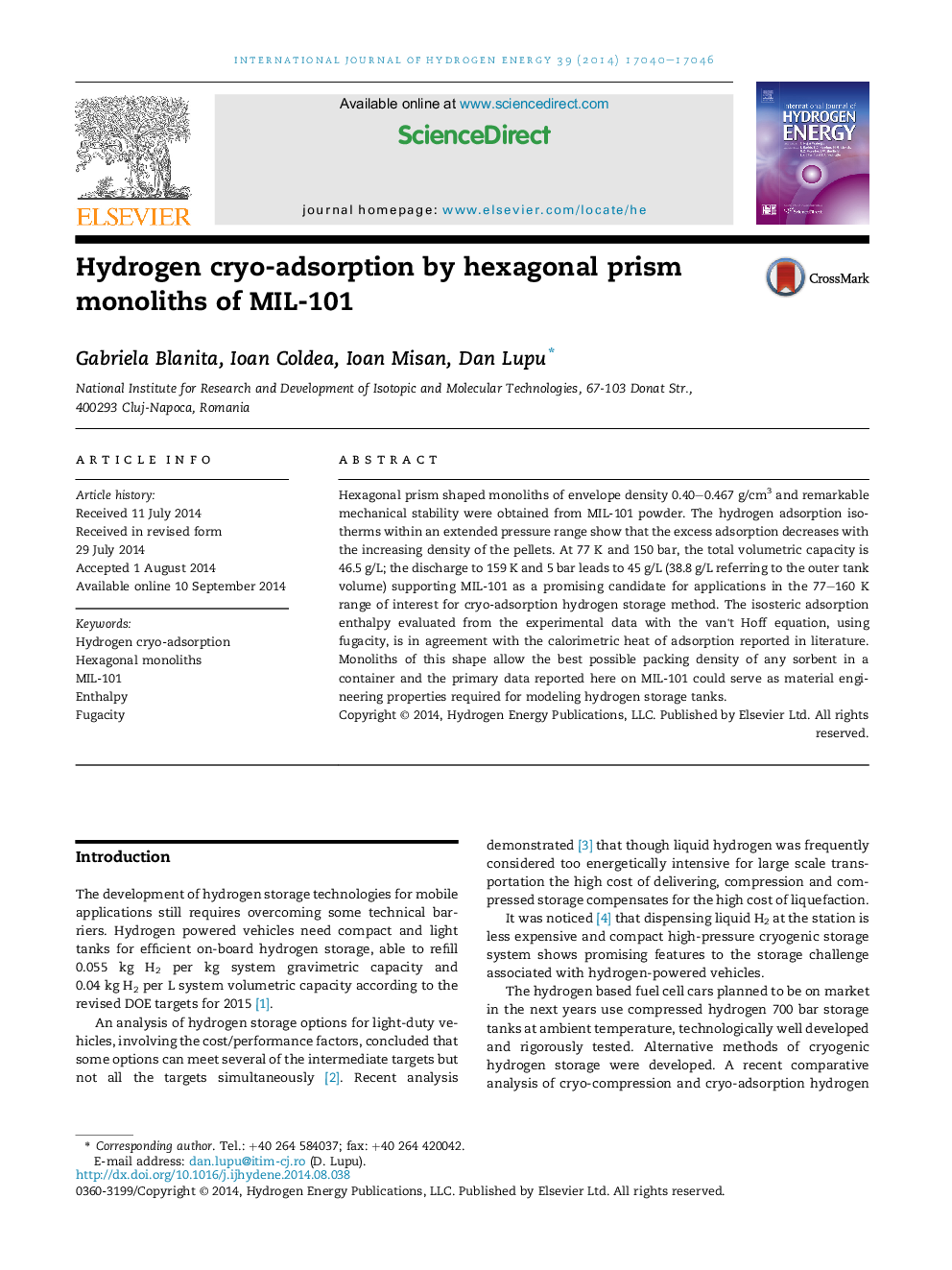| Article ID | Journal | Published Year | Pages | File Type |
|---|---|---|---|---|
| 1272159 | International Journal of Hydrogen Energy | 2014 | 7 Pages |
•Hexagonal prism MIL-101 pellets show good mechanical and thermal stability.•Hydrogen adsorption isotherms, volumetric storage capacity.•Adsorption enthalpy in agreement with calorimetric literature data.•Deliverable storage capacity satisfying DOE targets in the cryo-adsorption range.
Hexagonal prism shaped monoliths of envelope density 0.40–0.467 g/cm3 and remarkable mechanical stability were obtained from MIL-101 powder. The hydrogen adsorption isotherms within an extended pressure range show that the excess adsorption decreases with the increasing density of the pellets. At 77 K and 150 bar, the total volumetric capacity is 46.5 g/L; the discharge to 159 K and 5 bar leads to 45 g/L (38.8 g/L referring to the outer tank volume) supporting MIL-101 as a promising candidate for applications in the 77–160 K range of interest for cryo-adsorption hydrogen storage method. The isosteric adsorption enthalpy evaluated from the experimental data with the van't Hoff equation, using fugacity, is in agreement with the calorimetric heat of adsorption reported in literature. Monoliths of this shape allow the best possible packing density of any sorbent in a container and the primary data reported here on MIL-101 could serve as material engineering properties required for modeling hydrogen storage tanks.
Graphical abstractFigure optionsDownload full-size imageDownload as PowerPoint slide
